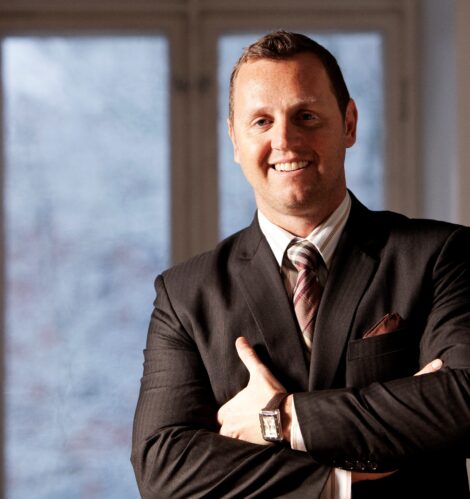The energy sector encountered many hurdles in 2016. The fluctuating prices, short-sighted political regulative culture and growing taxation directed at energy generation and consumption challenged market actors and raised questions about the sector’s future. The ongoing changes require a thorough shifting of the market.
Nevertheless, EPV Energy navigated the storm well, considering the circumstances of 2016. We responded to the challenges with new power plants and several development projects which are sharpening our operational capabilities. Our new strategy from the spring also confirms that we are continuing along our chosen path and moving towards emission-free generation throughout the Group in a determined way.
Our large building projects proceeded favourably over the year. In addition to Olkiluoto Unit 3, our largest projects were the wind parks of Metsälä and Ilmajoki and the Raahe CHP Plant. Of these, both Ilmajoki and Raahe were completed and became ready for production during the summer.
Finland should take its cue on power plant taxation from Sweden
Sweden has improved the competitiveness of nuclear and hydropower plants.
One of the problems with the profitability of Finnish nuclear and hydropower generation is the high real estate tax burden the plants carry. This tax has been raised at every turn over the last few years, which considerably eats away at the profitability of electricity generation. Respectively for combined heat and power plants, the continuous increases in excise duty on heat have long been driving customers away from efficient cogeneration. Although in principle the EU prohibits the taxation of electricity generation, Finland has – slightly crookedly – found a way to tax the producers of electricity generation instead of the end product. Evidently we should once again follow Sweden, where the government decided last year to improve the competitiveness of nuclear and hydropower plants by significantly reducing their taxation.
In addition to the taxation issue, the prospects of Finnish hydropower were considerably weakened when the government decided not to repeal the Act on the Protection of Rapids (35/1987). For this reason, our associated company Pohjolan Voima’s Kollaja hydropower project had to be abandoned. It seems that it is no longer possible to build an extensive and even environmentally friendly hydropower plant in Finland. A government decision like this, which unfortunately demonstrates the order of priority in Finland, hinders the availability of domestic load following power and reduces our ability to transfer to an entirely emission-free electricity system in the future.
How do we generate heat in an acceptable way on a large scale
Due to low electricity prices, the country’s CHP (combined heat and power) plants are in trouble. The CHP plants of our partnership company Vaskiluodon Voima are struggling to stay profitable.
As well as coal, peat as a fuel is seen in a negative light and the burning of forest harvesting residues is being more and more widely criticised, particularly at the EU level. The question therefore remains: how to generate heat in an acceptable, concentrated way on a large scale? For now, this question remains unanswered.
Finland’s massive investments in bioeconomy are sensible and profitable only to a certain extent.
The government’s energy and climate strategy is geared towards prohibiting coal and investing massively in bioeconomy. To a certain extent, this is a sensible policy, but bioeconomy cannot salvage everything. For example, the development of cars in Europe seems to be geared towards electric cars and hence the demand for forest-based transport fuels may not be as great in the future as is now assumed. However, if massive bioeconomy investments are embarked on, it should be ensured that they will stay viable for decades.
The complete ban on coal in Finland affects issues relating to the security of supply and the market of other fuels. In any case, the use of coal will inevitably fall naturally and cease entirely by 2030 when the energy sector commits itself to more and more effective utilisation of new technologies. That is why establishing separate regulations on a single fuel is simply futile and unnecessary.
A capacity market or certification system may solve the shortage of electric power
The changes in the energy sector require a thorough shifting of the market.
The decrease of emissions and increase of renewable energy will escalate the need for load following over the next few years. EPV believes that the only solution is to completely revise the electricity market and to transfer also in Finland, for example, to the capacity market or the electricity certificate system, which would provide new value for load following.
A break from investment decisions, directing resources on the optimisation of operations
EPV Energy took a break from large investment decisions in 2016. Instead, we started to purposefully increase EPV’s know-how to ensure that we will fare well in all kinds of situations in the quickly changing energy market of the future. This is a huge challenge for the organisation, but very familiar to many industries: how to successfully shift from being the realiser of massive investments to being the agent of improvements for operational capabilities.
This great challenge has been acknowledged at EPV and we have taken our first steps towards resolving it. In 2016, we started several different development projects in which we utilise new technologies in a smart way. We are focusing our resources, for example, on developing forecasting tools for generation in wind power farms and tools for analysing the status of the power system. In addition, we are systematically improving our abilities in balance management. All our development projects have one thing in common: their project plans are swarming with familiar terms, such as big data, digitalisation, IoT and artificial intelligence. It is EPV’s task to use these to build itself the most advanced tools in the market.
March 2017
Rami Vuola


